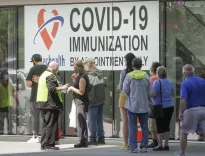Is Cervical Cancer Screening Impacting Women in India?

Synopsis
Key Takeaways
- Over 10.18 crore women screened for cervical cancer in India.
- India accounts for 25% of global cervical cancer deaths.
- Screening initiative targets women aged 30-65 years.
- Utilization of Visual Inspection with Acetic Acid (VIA) method.
- ASHAs play a crucial role in community awareness and screening participation.
New Delhi, July 26 (NationPress) In a significant move to combat the increasing incidence of cervical cancer and related fatalities in India, over 10.18 crore women aged 30 and above have undergone screening for this disease at various Ayushman Arogya Mandirs (AAMs), as reported by the government during the current Monsoon session in Parliament.
India represents 25 percent of the global cervical cancer mortality rate, primarily due to late diagnosis.
“As of July 20, data from the National NCD Portal shows that 10.18 crore women have been screened out of an eligible population of 25.42 crore females aged 30 years and older,” Jadhav stated.
“This achievement underscores the government's unwavering commitment to providing comprehensive and preventive healthcare via Ayushman Arogya Mandirs,” he added.
This initiative is part of a broader population-based program aimed at the screening, prevention, and management of Non-Communicable Diseases (NCDs), facilitated under the National Health Mission (NHM).
“The initiative specifically targets women aged 30 to 65, with screenings predominantly conducted using Visual Inspection with Acetic Acid (VIA) at Sub-Health Centres and Primary Health Centres by trained health professionals. Cases that test positive for VIA are referred to higher-level facilities for further diagnostic procedures,” Union Minister of State for Health and Family Welfare Prataprao Jadhav noted in a written response to the Lok Sabha.
Additionally, to combat cervical cancer at the community level, the government has enlisted Accredited Social Health Activists (ASHAs), who play a vital role by utilizing the Community Based Assessment Checklist (CBAC) to pinpoint individuals at risk. They also encourage women to participate in regular health assessments and screenings at AAMs.
ASHAs are instrumental in raising awareness about the significance of early detection and the adoption of a healthy lifestyle.
The Ministry also initiated a time-sensitive NCD Screening Campaign from February 20 to March 31 to enhance screening efforts for individuals aged 30 and above. The success of this campaign has contributed to the current milestone, as stated by Jadhav.









